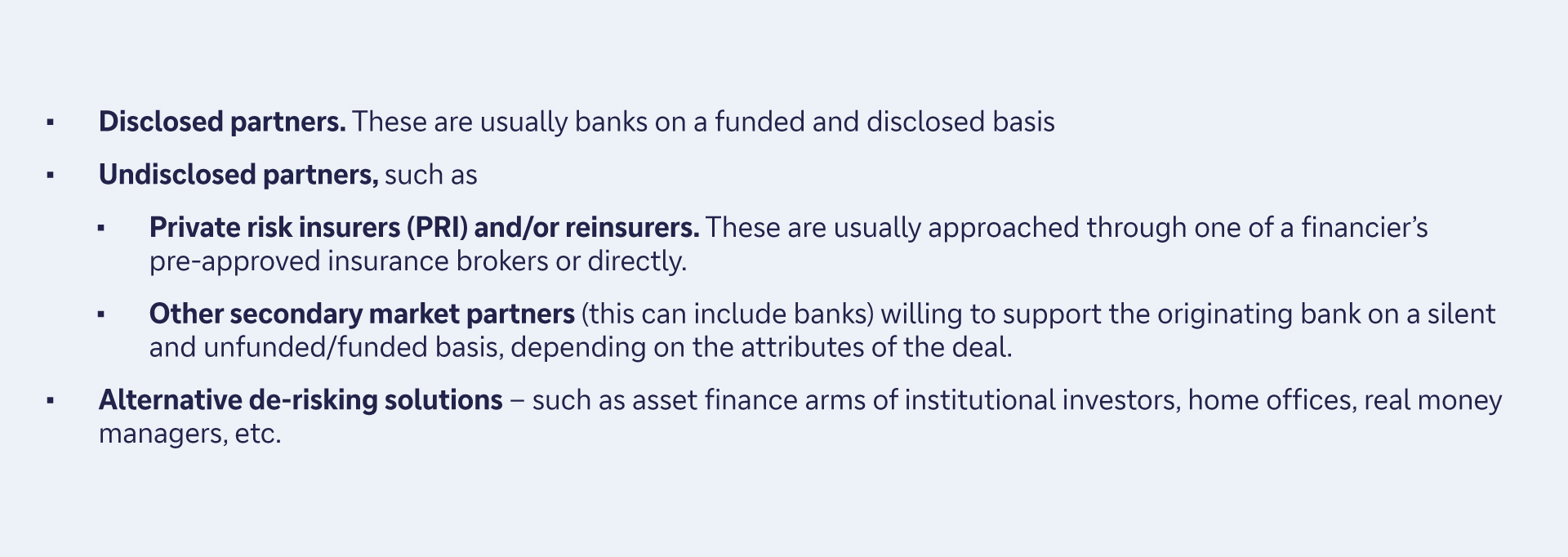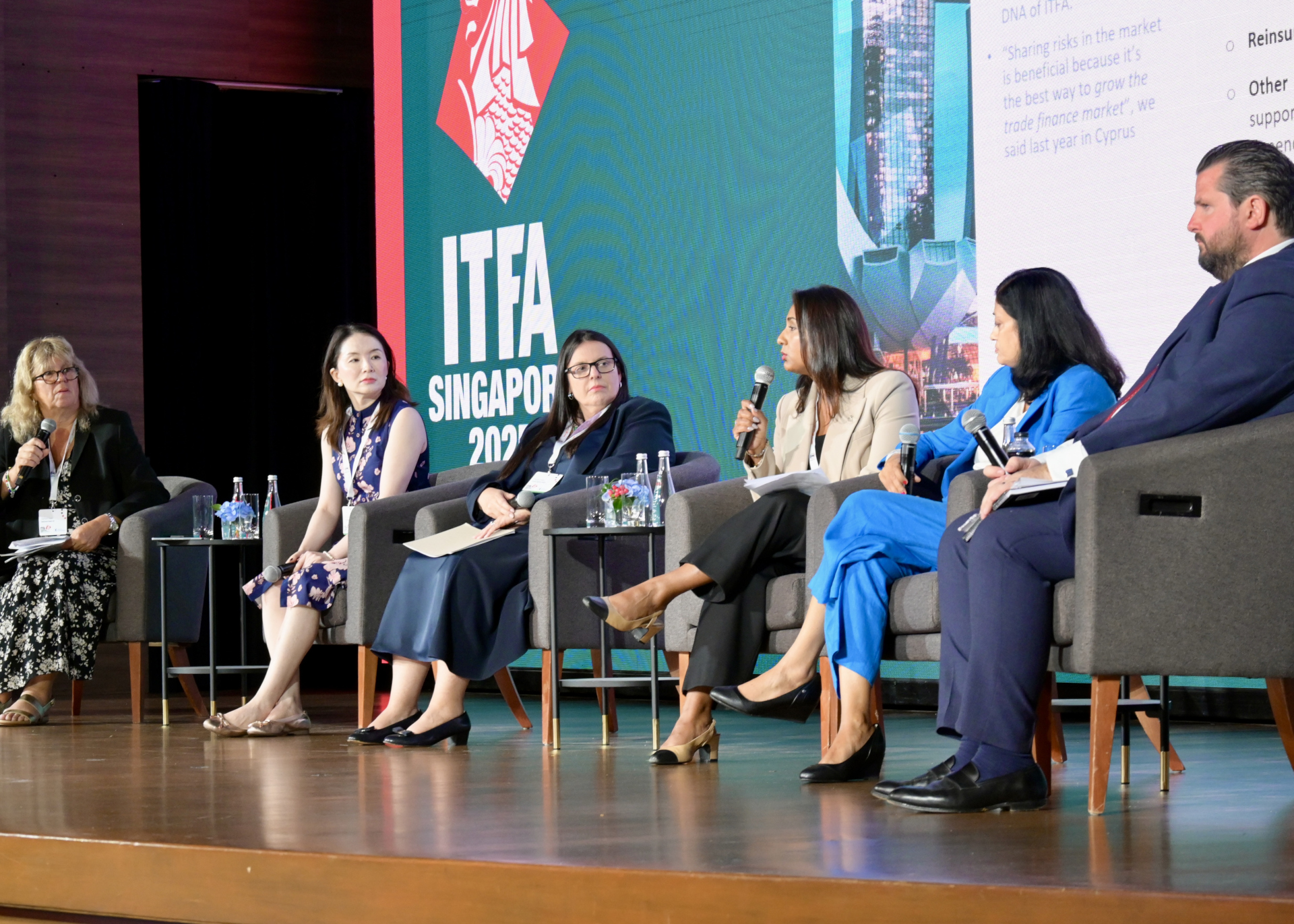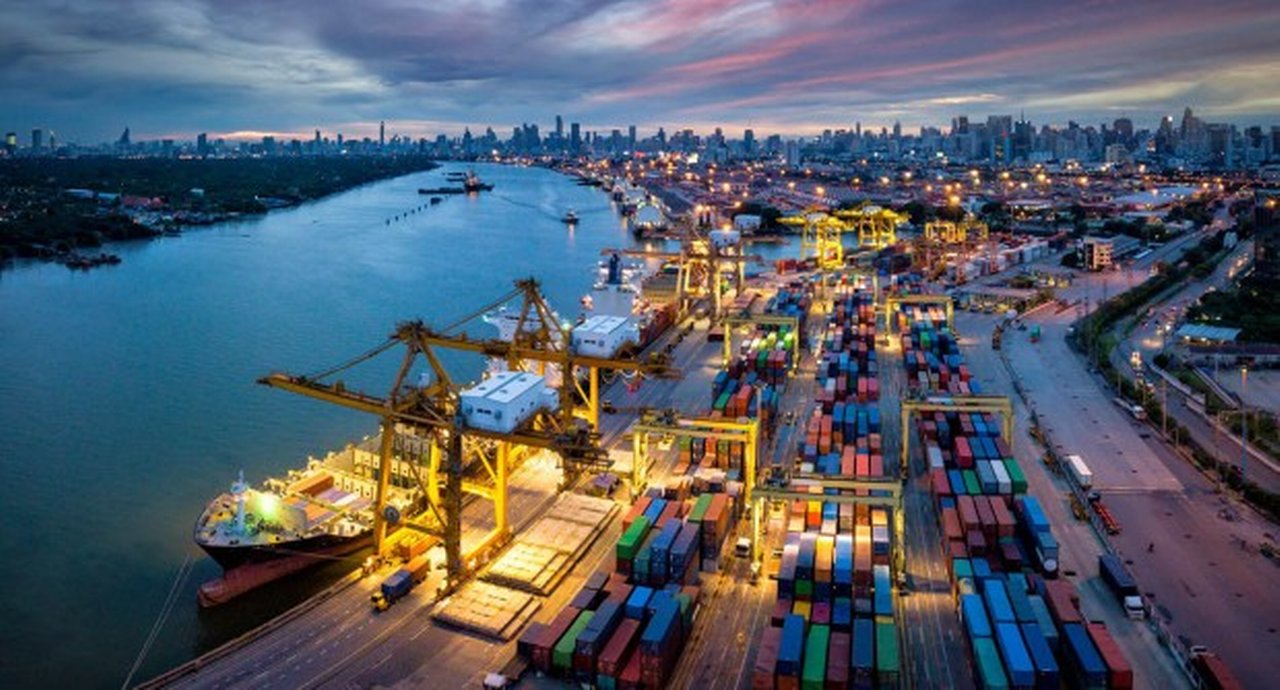17 October 2025
Origination of trade lending assets and then distributing them to other financial institutions and investors makes the scaling up of financing trade possible. flow’s Clarissa Dann provides key takeaways from panel discussions at the 51st International Trade & Forfaiting Association in Singapore
MINUTES min read
Without distribution, there would be less trade finance to support global trade. But geography and pricing mean deals and partners need careful selection from those participating.
“Sharing risks in the market is beneficial because it’s the best way to grow the trade finance market,” declared Boris Jaquet, Global Head of Trade Finance Distribution at Deutsche Bank at ITFA’s 2024 event in Cyprus. His words sum up the Association’s DNA and its unique community of secondary trade finance market participants (see Figure 1) – these annual events were once described (in 2014) as “a bit like walking into someone’s wedding”. Having attended most gatherings since 2011, the sense of connection, getting deals done and building trust is more acute than ever.
Expert FI panel
While there were the usual panels examining the distribution and structuring of trade finance for investors at this event and in previous ones, in 2025 our financial institutions (FI) went back to the basics of what happens day in and day out to ensure that institutional capital flows into the market, that trade gets paid and that it keeps growing – in both the origination and distribution of risk.
The panel comprised (seated from left to right in the picture):
- Clarissa Dann, Editorial Director, Marketing, Deutsche Bank
- Jing Zhang, Executive Director, APAC Head of FIG Trade Sales, J.P. Morgan Payments
- Claudia Lopes, Head of Trade Syndications and Distribution, Crown Agents Bank (CAB)
- Sheleena Govind, Head – Financial Institutions, Trade Corridors and Distribution, Trade & Working Capital, Rand Merchant Bank (RMB)
- Aarti Mohapatra, Director, Loan Syndication, Sales & Distribution, Mashreq Bank
- Jonathan Lonsdale, Global Head of Trade & Working Capital Solutions, Private Debt Mobilisation, Banco Santander
“The biggest investor base for trade assets is banks”
Ports of call for risk distribution
Having each summarised their businesses, panel members revealed what approaches they took when looking for risk distribution partners. Santander’s Jonathan Lonsdale opened by stating that the biggest investor base by far “is still banks”. The type of relationship varies, depending on the transaction between clients that specify what they want placed where, or “when we suggest investors that would suit them”, the approach from clients is more ‘hands off and light touch”. Lonsdale pointed out that smaller regional banks can be more opportunistic and more price driven. These deals are useful for non-investment grade transactions or those that are “sticky and difficult – and they are often done undisclosed”.
He added that his second biggest investor base is private credit insurance – also done undisclosed. After that, he explained is “everyone else”. This includes trade funds and institutional investors. The institutional base for this asset class remains “very limited” and many of the trade funds try to capture financing that is outside the bank ecosystem rather than investing in deals originated by banks. This can “lead to quite high pricing requirements and small tickets”, he said. As for the securitisations – some banks have co-investment agreements with private equity houses or hedge funds”, which he regards as “useful” for “complicated deals” but not central to their distribution.
Representing UAE’s Mashreq Bank, Aarti Mohapatra made the point that as a Middle Eastern bank, each day is seen as a new opportunity to extend their trade corridors and geographies of operations – so the originate to distribute strategy is key. Like Santander, Mashreq distributes to banks, the insurance market (she highlighted the good partnerships with underwriters) as well as the development finance institutions and multilateral development banks.
Shaleena Govind at Rand Merchant Bank explained how their key focus is on connecting corridors into the African market. The originate to distribute model is a strategy that allows them to execute transactions across more than 35 different markets. RMB also uses the bank-to-bank market and works extensively with Development Finance Institutions (DFIs), through established trade finance programmes via master risk participation agreements as well as co-lending. In addition, RMB partners with commodity traders and non-bank financial institutions looking to provide finance into supply chains.
London-based Crown Agents Bank takes a specialised approach explained Claudia Lopes, by focusing on emerging market financial institutions, particularly in Sub-Saharan Africa. She noted that this segment still represents a thinner market for distribution, as many of FI obligors are either unrated or have ratings that result in higher risk-weighted assets (RWAs) for banks. As a result, CAB primarily works with bank partners who have a strong understanding of the local environment and risk profile, as well with global and pan-African development financial institutions (DFIs) and multilateral development banks (MDBs).
Jing Zhang and her team at J.P. Morgan Payments fund their FI clients to support trade requirements in and out of Asia. They also support their global corporate clients when they trade with Asia using Asian bank lines. She made the point that origination and distribution work together and sit together. “The first partner and first team I talk to when I originate is my distribution team – this is very important when putting Asia deals together,” she said. The team covers 18 Asian markets and has a presence in 14 countries. Based in Singapore more than 10 years, she has seen significant change in the trade and regulatory environment. “You are the unsung heroes enabling a lot of trade deals – especially in emerging Asia,” she told delegates.
Geography and markets
The discussion then adopted a regional lens, with panelists explaining that challenges and deal types depend entirely on which part of the world one operates in. RMB’s Govind explained that in Africa, “some clients and FIs face liquidity constraints in the form of “access to hard currencies, dealing with high levels of interest rates, inflation and also the sovereign debt pressures”.
She added that because the market is quite dynamic, origination patterns will fluctuate as markets change. For example, in early September when the conference took place Nigeria had reserves of US$39bn (they rose to US$42bn by the end of that month) and nine months of import cover – a vastly improved picture from a few months earlier.1 As buyers and sellers in the market got more comfortable with the economic environment and each other because of longstanding relationships, they look for more open account solutions – so her bank has had to adjust accordingly.
For Lopes, outside of countries such as Kenya and Nigeria she looks to the DFIs and MDBs to play a larger role – because insurance companies have their capacity taken up by larger infrastructure deals. “We are looking at the trade funds space but more often than not we find there is a return expectation that is not in line with what the asset is priced at.”
“Traditional trade instruments are very much in demand from China, Korea and Bangladesh”
Turning to the Asian markets, Zhang said that traditional trade instruments were very much in demand from China, Korea and Bangladesh. She anticipates more local Asian banks becoming core investors in trade assets as they know their markets so well – “so there will be a lot of competition for those assets”.
For distribution, Santander is focused mainly on developed economy markets, said Lonsdale, but it has a large presence in Latin America with representation at different levels across the continent and a large trade book. However, the bloc is not homogenous – the countries have varied legal systems and local laws and taxes limiting what can be distributed. Some do not recognise English law concepts such as equitable assignment.
What investors are saying – and pricing
As reported by the ITFA Trade Finance Investment Ecosystem (IFIE) working group in 2024, the preceding three years saw the trade finance asset class begin to turn the page from being a relatively esoteric alternative to “now being recognised as an increasing mainstream vertical in the broader private asset finance offering, itself currently an area of significant growth”.2
However, continues the report, “The traditional banked business where trade finance is often competitively priced as part of an overall corporate banking relationship often does not align with where investors see the price of risk. As such, a number of globally recognised international asset managers have now raised direct lending working capital finance funds and investor interest is rapidly growing.”
ITFA’s panelists were aligned on this. “Trade is a relationship business – a door opener into other products in banks so it’s not priced in accordance with the ratings of those markets and countries,” said one. Another pointed out that while pricing has come down by 200 basis points over the past two years and remains “challenging”, her institution works hard trying to find the right “buckets” of assets to attract new investors and bring them into the network.
As for what might spook investors, the stability of trade finance as an asset class, together with its client relationship characteristics and low default rates make it, agreed the panel, pretty resilient to events such as the 2 April ‘Liberation Day’ in the US.3 And the spike in credit spreads looks less sharp when seen in the context of a five-year picture added Santander’s Lonsdale. The general theme of this part of the discussion did reveal, however, that the overall supply of trade finance is low, and there is a lack of new deals. Banks that rely on participating in other bank deals were, at the time of the conference, finding that deal demand outstripped supply.
J.P. Morgan Payments’ Zhang said that while her credit team were monitoring tariffs and ran models on how these could affect Bangladesh and Vietnam given the scale of their exports to the US, on a day-to-day basis she saw “more impact from conflicts than tariffs”. For example, the Russia/Ukraine conflict has impacted the financing of fertiliser with Russia leading the exports pack at 16.6% of all exports.4 Her team are doing many more local currency financings because of the high comparative cost of using USD.
Prudential regulation/Basel
Basel 3.1 is the final set of international banking reforms designed in response to the 2008 global financial crisis, explains the Bank of England. “It is designed to improve banks’ own measurement of risk, standardising approaches between firms to make their capital ratios more consistent and comparable.”5
The Bank of International Settlements (BIS) based in Basel, Switzerland, provides updates on when the standards are implemented into domestic regulatory regimes in the form of a dashboard.6
For example, in the UK, the Prudential Regulation Authority originally confirmed January 2026 as its implementation date – but is now delaying to January 2027. Other jurisdictions (for example, South Africa) have already implemented the changes. The panel were asked for their views on how evolving prudential regulation shifted distribution strategies and it was agreed that the rules made the cost of capital more expensive and banks will balance the distribution of trade and working capital deals between funded and unfunded participation according to appetite and capital position.
“As a bank you must decide what is the best approach so you may decide to shift strategy to taking on more unfunded parts of the transaction and then look to partner with another institution to jointly solve for the entire requirement in the client’s ecosystem. This may mean you bring in a partner who can take on the funded leg,” explained RMB’s Govind, circling back to Jhang’s point about reciprocity with other banks. The overall lifetime value of the client becomes increasingly important, another panelist said, “it’s harder to justify taking on a client that is a single product user now”.
But overall, the panel was optimistic and despite the price tightening, deals are being done, they agreed.

Figure 1: Secondary trade finance market participants
Source: A Guide to Trade Finance, Second Edition (Deutsche Bank)
Cover image © Deutsche Bank
Panel image © International Trade & Forfaiting Association
The 51st Annual International Trade and Forfaiting Conference was be held in Singapore from 3–5 September 2025, at The Ritz-Carlton, Millenia Singapore. This panel session took place on Thursday 4 September
Sources
1 See nairametrics.com
2 See itfa.org
3 See edition.cnn.com
4 See worldstopexports.com
5 See bankofengland.co.uk
6 See bis.org




